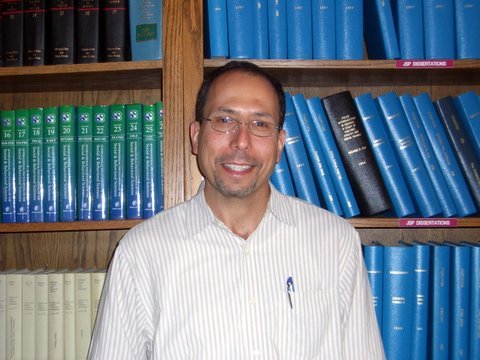Where Have You Gone Joe Friday? Technology and Mass Surveillance vs Old Fashioned Policing in the War on Terror
As we reflect on the 5th Anniversary of the terror attacks of September 11, 2001 it is important that the debate over security versus liberty (and privacy) not obscure the debate over how security is to be obtained. Let us start with the blunt fact that from a policing perspective, the 9/11 plot was highly vulnerable to traditional suspicion based surveillance. As documented by the 9/11 Commission, American officials were aware of the presence within the United States of all of the terrorists. Some of these individuals were known by other American officials to be involved in militant Islamist politics in Europe. Famously our government agencies "failed to connect the dots" but that should not satisfy us. Any close surveillance of these individuals would have raised many deeper reasons for suspicion. Why were they in flight schools? How were they being financed? Even had prior knowledge of the terrorists not identified them as persons worthy of suspicion, their behavior alone, especially their highly irregular conduct in Miami when Mohammed Atta and one of his associates flew a small private aircraft from their flight school to the very busy Miami International Airport, and then left the aircraft on the tarmac after abandoning their take off.
Instead of an effort to improve our law enforcement ability to identify and follow suspicious persons, the Bush administration's war on terror has consisted of intimidating orders to appear for questioning to thousands of Muslim immigrants to the United States, imprisoning for five years hundreds of apparently "low value" suspects in Guantamo, torturing (or close to it) higher value suspects in secret prisons around the world, overthrowing governments in Afghanistan and Iraq and replacing them with apparently more democratic governments which continue to survive only with US military (or NATO) life support, and high technology surveillance of international phone calls.
This is a broader pattern of global security that has fed on the bad example of the American war on crime. While the rhetoric of the war on crime celebrated police, the tactics emphasized rounding up low value suspects through relatively easy low grade surveillance and seizure. For more serious crime coercive interrogation, jail house informants, and if necessary, police perjury became all too common approaches as DNA exonerations in recent years and the exposure of police fabrication in the conviction of over forty mostly black residents of Tulia Texas case has documented. The minimal concern with the seriousness or even guilt of arrestees reflected a belief that incarcerating large numbers of potentially dangerous criminals would repress crime so careful investigations were superfluous.
We see it reflected in an international anti-doping effort in sport that is largely dependent on drug testing rather than police investigation. (See, Brian Alexander, Tour de Farce).
We see it reflected in the preference of many contemporary mayors spending money on high technology license plate readers and road side video surveillance cameras over money for community policing.
The reliance on technology and mass surveillance over close police investigation of suspicious individuals is promising only if you like the logic of the war on drugs. We need a new paradigm across a whole set of security problems (from terror, to urban crime, to white collar crime, and to sports), but fortunately its an old paradigm, i.e., investigation that relies on knowing a community and its residents rather than on broad dragnets or coercive tactics. A community policing approach, to say, doping in sports, would not require harsh prison terms for those found doping, or even formal criminalization. Police can seek to discover the source of nuisances that endanger the health and well being of the community and seek civil measures to restrain the abusive behavior.
What would a "community policing" approach to homeland security look like? First it would involve direct contacts between law enforcement and Muslim immigrant communities to assure them that they are part of the community being protected and that threats of hate crimes as well as initimidating tactics by federal authorities. Political scientist David Thacher has described this kind of approach by the police in Dearborn Michigan, a city with the highest concentration of Middle-Eastern immigrants and their off spring in the United States. Second, it would involve expanding police staffing to permit permanent site appropriate surveillance of vulnerable terrorism targets (police departments today are doing this on a limited basis, but at a cost of stretching existing resources). Third, it would require upgrading the communication and command integration of police and other first responding organizations to assure that rescuers would have the best possible chance of saving lives (including their own).
Labels: Miscarriages of Justice


0 Comments:
Post a Comment
<< Home